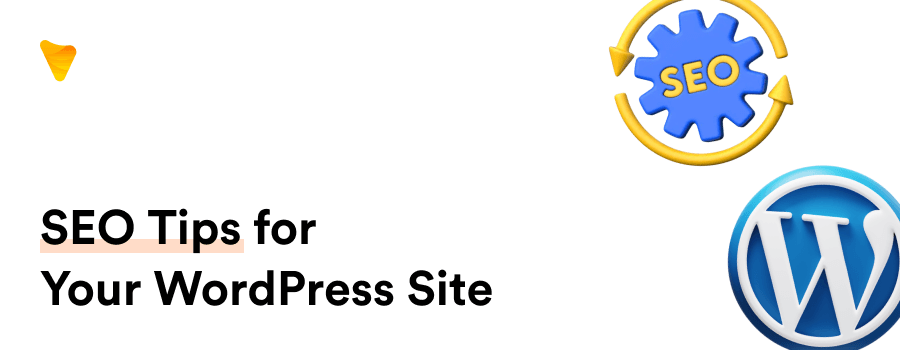
11 Tips to Optimize Your WordPress Website for SEO
Introduction
The Importance of SEO for WordPress Websites
If you’re a WordPress site owner, SEO is crucial. But why? The strategic implementation of SEO, using the help of an SEO analysis tool can significantly enhance your website’s rankings, ensuring your content prominently appears in search engine results.Tools like Screaming Frog, Sitebulb, and Botify don’t just crawl and analyze your website in-depth but also help you optimize and spot potential SEO pitfalls that can hamper your organic visibility. An increase in search engine visibility can lead to an influx of high-quality traffic, enhanced exposure on the worldwide web, and ultimately, an upswing in conversions. Investment in on-page optimization, utilizing such SEO analysis tools, doesn’t just pay dividends in search rankings – it also boosts the credibility of your site amongst potential viewers.

Understanding the Basics of SEO
SEO, or search engine optimization, involves tailoring your WordPress site to appeal to search engines like Google. The seo guide we use in this blog underscores the importance of well-chosen, relevant keywords and the correct use of headings in shaping your content. Adopting “Heading” from the blog-editing toolkit, you can systematically arrange your content, allowing search engines to scan through your article easily. Depending on the structure of your content, you can choose different types of headings. Note that effective use of headings, like H1 for the introduction and H2 for other key pointers, not only helps with better page organization but also enhances user readability.
These seo practices are crucial for your site’s competition to rank higher on search results pages. After all, higher rankings translate to more clicks, bringing more traffic, and eventually, conversions to your site. SEO isn’t sorcery – it’s smart, strategic, and absolutely essential for your online presence. Insightful use of your heading tool coupled with other effective seo strategies can optimize your WordPress website for significantly improved search visibility.
Choosing the Right SEO Tools for your WordPress Website
Importance of a SEO Friendly WordPress Theme
Picking a SEO-friendly WordPress theme is more than just about aesthetics; it forms the underpinning fabric of your website’s SEO. Integral to this is the website structure, referred to as the “org chart” in digital marketing. This should be well-planned, writing down and nesting all the pages and categories your website might have, in a clear hierarchy to create a clear website structure. Clean codes, fast load times, and compatibility with SEO plugins are hallmarks of such SEO-friendly themes. Such factors enhance the navigational internal links, which are part of the website’s structure like menus, categories, or breadcrumbs, pertinent to increase the crawlability of your site by search engines like Google. Google navigates through these links to understand your website structure, and how pages are interconnected, boosting your WordPress site hierarchy.
As a part of your theme choice, remember to check user reviews, demo the theme, and pay keen attention to your site’s SEO optimization. Most importantly, the theme should be responsive, passing the mobile optimization test with Google to ensure mobile-friendliness, another major SEO factor crucial to the website structure. A simple step like this can set your website on the path of SEO success, hence emphasizing the importance of a SEO-friendly WordPress theme.
Utilizing SEO WordPress Plugins
SEO WordPress plugins are key guardians of your website’s SEO health. They not only streamline the implementation of WP Rocket, a top-tier search engine optimization plugin, but also coordinate with several other valuable SEO plugins like Yoast SEO, All in One SEO, or Rank Math. These tools allow you to effortless optimize for keywords and manage meta descriptions, XML sitemaps, bolstering your website’s speed, performance and valuable metrics. Each of these WordPress plugins has distinctive functionalities. For instance, Yoast SEO is widely acknowledged for its cutting-edge features, consistent updates, and ability to integrate powerful metrics tracking using Google Search Console. If uncertainty persists, a simple exploration through the wide-ranging WordPress plugin library should reassure you.

Optimizing the Fundamental SEO Elements
Crafting Keyword-rich Title Tags and Meta Descriptions
Curating keyword-rich title tags and meta descriptions is not just SEO top practice—it’s an art! This process entails developing a focus keyword, which should be ideally placed near the start of the title tag. This focus keyword serves as the initial introduction to readers and search engines, including major search categories and tags, otherwise known as taxonomies, to organize your website’s content effectively. Furthermore, a schema, or a structured data, could be employed to understand the content of the page better. So, think about dipping into a well-researched list of keywords while you’re at it—checking out terms pertinent to your industry or keywords your competitors might’ve leveraged. Remember, keeping consistent relevance with your site’s focus is key while utilizing keywords. Do not force-fit a keyword that doesn’t meld with your site theme.
The same notion applies to meta data, such as meta descriptions. Though they might not directly affect your ranking, meta descriptions play a significant role in engaging users. Consider the meta description as your movie teaser—it draws in your audience, enticing them to explore further into your content. Master the art of writing a captivating meta description and watch your click-through rate soar!
Configuring SEO-Friendly Permalinks
Don’t let the default WordPress permalinks deter your SEO efforts. Make them SEO-friendly! How? Navigate to Settings > Permalinks for superior permalink structure and select “Post name”. This tweaks your URL structure, making URLs readable and rich with relevant keywords—an SEO win! Short, simple, and devoid of extraneous add-ons, these permalinks, the most preferred permalink format, are far more pleasing to the eye and search engines. Here is a word of caution though — If your site has been operational for over six months, exercise restraint! Altering established permalink structure may elicit unforeseen issues, mainly 404 errors, and risk alienating your faithful audience. Be informed, be strategic in your SEO decisions.
Content is King: Creating High-Quality WordPress Search Engine Optimization Content
Effective Keyword Research Techniques
Your keyword research can make or break your SEO strategy. Employing the correct use of keyword research tools such as SEMRush, KWFinder, or other highly recommended ones like Screaming Frog, Sitebulb, and Botify can boost your SEO goals exponentially. These tools not only help identify keywords with high search volume and low competition, but also identify SEO technical issues that might affect your organic visibility. Furthermore, Google’s trustworthy assistance is always at your disposal. As you type in your topic and scroll to the bottom of the page, you’ll uncover a rich assortment of related keywords—short and long-tailed—that are in line with your keyword use focus. These can be skillfully employed to widen your content’s reach. Happy hunting!
Integrating Keywords Naturally into Your Content
Lo? Embarking on a quest to ward off spam comments and prevent spam from infecting your content? Instigate a rethink! Google rewards natural language and penalizes keyword stuffing and spammy content, which can sabotage your authority and negatively impact your SEO efforts. Utilizing the magic of your pen and resources like WordPress’s Akismet, subtly interlace your keywords into an engaging narrative. Always ensure the content is appealing, insightful, and free from the damage of spam comments. Why? As Google’s got a keen understanding of context, it’s wise to have one well-embedded keyword in a captivating, intellectually engaging article rather than ten arbitrarily inserted, or worse, littered with spam comments.
Keep thinking about your readers first, then the search engines. Adhering to proper comment management and spam-free content principles is the secret of SEO. Generating quality-driven, SEO-focused, and spam-free content is a challenging yet rewarding journey, as providers like GetGenie perfectly exemplify. Always remember—the higher the content’s authenticity and engagement, signified by genuine comments, the higher its click-through rates and ranking on Google. So, always ensure you keep those spam comments at bay!
Mastering Image Optimization for SEO
Importance of using Proper Image Sizes and Compressing Images
Website speed is a key factor in SEO, and images play a role here. Large, uncompressed images can inhibit the effective website structure, and drag down your site’s load time, which could negatively influence your rankings. However, an efficient metrics understanding can aid in rectifying this issue. By resizing your images appropriately and compressing them before uploading, you enhance your website’s performance metrics. Integrating plugins like Imagify as part of your system can do this effectively. There’s no compromise on quality, I assure you—but you gain a smoother, quicker website that keeps both search engines and users happy, and also enhances the server response time from your web host. It’s crucial in planning the navigation of your website’s structure and leveraging the appropriate metrics.
Crafting Descriptive Image Alt Texts
Never underestimate the power of a well-crafted image alt text! More than just SEO, alt texts represent the blending of user experience, accessibility, and alt text information. They communicate the narrative of your image to search engines and to those visually impaired, unable to see the image themselves. Remember – the finest alt text, like red-butterfly.jpg, is richly descriptive, devoid of keyword stuffing, and embedded with image tags for optimized search results. They should flow naturally as they’re not required for images with a purely decorative purpose, nor for those containing texts written as real text nearby. Let your images broadcast an eloquent story, captivate search engines, and provide an auditory perspective for the voiceless. SEO goes beyond merely improving rankings–it’s about inclusivity too.
Improving Website Navigation for Better SEO
Ensuring an Easily Navigable Menu
Your website’s menu is your user’s roadmap—it should be clear, concise, and easy-to-navigate. This is an integral aspect of your website structure and particularly relevant during the “First-time configuration” of your SEO plugin setup, such as Yoast. Why? Good website navigation, including effective use of navigational internal links, impacts user experience and reduces bounce rates—factors that Google values when determining search results. Adopt a visitor’s perspective to create a logical grouping of main topics and subtopics as part of your menu structure; this will facilitate smoother navigation and improve understanding of how your pages are interconnected. And remember—don’t overwhelm your users with links or complex structures. Less is often more. Regularly review your menu via Dashboard > Updates to ensure it remains user-friendly across various device types, including mobile. In following these tips, you will not only create a navigable menu for your users but also a charming path for Google crawlers to understand the structure of your website and display the most accurate search results.

Efficient Use of Breadcrumbs
Breadcrumbs might seem tiny but they pack a powerful SEO punch! Breadcrumbs are essential in indexing your WordPress pages as they showcase your site’s structure. These trusty little features help users understand where they are on your website. Furthermore, they simplify the task for search engines to crawl and comprehend your site’s hierarchy – a vital factor in SEO analysis. Setting up breadcrumbs is a breeze, especially with plugins like Yoast SEO. Merely navigate to Yoast SEO > Settings > Breadcrumbs and integrate the block into your chosen post or page. This technique is an effortless way to enhance your site navigation and secure some SEO bonuses!
Turbocharging Site Performance for SEO
Role of Quality Hosting in SEO
Make no mistake—quality hosting plays a key role in your SEO strategy. A good web hosting platform is integral, ensuring your website security, speed, and remarkable uptime- all crucial metrics in Google’s SEO checklist! We at [Your Company Name] utilize our own web hosting service, with providers like Bluehost, Dreamhost, or SiteGround, which contributes significantly to our SEO success. Special emphasis is placed on SSL certification to protect sensitive information and improve website security. You can use tools like Semrush’s Keyword Overview to track these metrics and monitor your website’s performance.
If you’re keen on reaping the most from your hosting service and harnessing these metrics effectively, do explore our Application Hosting, Database Hosting, and Managed WordPress Hosting plans. Remember, in the complex world of SEO, every keyword and metrics are important. They can either propel your site forward or push it back. Are you ready to make the right choice, prioritizing uptime, website security, and crucial SEO metrics? Choose wisely.
Importance of Speeding Up Your WordPress Site
Say it with me: Speed matters! Your website’s structure, right down to page speed—how quickly your webpages load—is not only a critical SEO ranking factor, but also has a direct impact on user satisfaction. According to Google, a swift site leads to reduced bounce rates, increased user engagement, and even improved conversions. An efficient method to accelerate your website and improve its metrics is by implementing a caching plugin, such as WP Rocket, celebrated for enhancing Core Web Vitals and quickening WordPress sites.
Other options include adopting a high-end WordPress hosting service, choosing a lightweight WordPress theme, optimizing your images, and leveraging a content delivery network (CDN). Furthermore, you can ascertain potential SEO technical issues affecting your site’s organic visibility using website crawlers like Screaming Frog or Sitebulb, providing a bird-eye view of your website structure. Remember: ‘Faster is always better’ on the web, and your SEO ranking is no exception.
Leveraging the Power of Internal and External Links
Boosting SEO through Internal Linking
Want an SEO power-up? Here’s a heading for thought: “Internal Linking – Your SEO Supercharger!” This strategic approach involves creating a multitude of backlinks within your site! Picture your website as a spider web—The more paths spiders can travel, the more they’ll delve into your heading-organized site content. This not only entices readers to stay longer by improving site navigation, but it also aids search engines like Google in better comprehending and ranking your site effectively with the help of structured redirects.
Take for instance, if you have a heading like “Boosting Plant Health,” why not link to your articles on indoor plants or trees using relevant anchor text? Crafting these links under appropriate headings allows for a harmonious blend of SEO and user experience. Think of it as an art and a science that can significantly elevate your website’s authority through quality backlinks under the right headings. Remember, internal linking—it’s an art, a science, and undeniably good SEO. It’s all about clever heading selections and placements.
Influence of Outbound Links on SEO for blogging
As bloggers, our writing carries weight.
Enriched with valuable insights, extensive taxonomies, research, personal input, and strategically placed outbound links, it significantly boosts your website’s standing. Recognized by search engine taxonomies like Google’s, this impact is evident in tools such as Google Search Console.
Quoting authoritative resources signals reliability to readers and search engines, backed by meticulous taxonomies and in-depth research. However, let’s never forget – quality rules over quantity! Ensure that your outbound links point to high-quality, authoritative domains.
Every carefully categorized link strengthens your content’s authenticity, earning favor in the eyes of search engine algorithms.
FAQs
Is WordPress SEO-Friendly?
Is WordPress SEO-friendly? Absolutely, thanks to its clean code structure, user-friendly design, integrated SEO plugins, and extensive SEO analysis tool functionality. Notably, services like Screaming Frog, Sitebulb, and Botify seamlessly integrate with WordPress for deep website analyses and identifying SEO-specific technical issues.
This platform offers all the necessary tools for on-page optimization right under its hood; ensuring your content has the right meta tags, permalinks, and engaging SEO-friendly content. Using an SEO analysis tool can help optimize these elements further, cementing your website’s position in search engine rankings.
Yet, like any property demanding maintenance to deliver the best results, Google exceptionally favours WordPress websites when continuous SEO best practices are applied. Therefore, roll up your sleeves and start transforming your WordPress site into a search engine haven utilising a nuanced SEO analysis tool. Let it guide you in dominating SERPs.
How to Conduct SEO on WordPress Site?
So you’re ready to dive into SEO on your WordPress site but aren’t sure where to start? Fear not. Begin by picking a SEO-friendly theme and installing a SEO plugin—Yoast SEO is highly recommended due to its comprehensive plugin settings, including tools to generate a schema markup for your content. After installation, tweak the Yoast SEO settings like regular backups and remote storage to maintain your website data.
Next, kick off your keyword research, integrating these into your blog’s heading and content naturally. In the plugin settings, prioritize your preferred format in the General section, favoring structures like “Post name.” Additionally, emphasize the significance of structured data (schema) for Google to grasp your page content, elevating your SEO efforts.
Keep your site navigation user-friendly, utilizing menus and breadcrumb features. Use “Yoast Breadcrumbs” block for essential SEO-friendly breadcrumbs in your post. When dealing with images, use appropriate sizes, compress them, and add descriptive alt text. Lastly, opt for quality hosting and working on page speed.
Ensure your URLs use the non-www version to avoid Google treating them as separate entities. Effectively organize content using taxonomies like categories and tags in WordPress. Prevent SEO damage by activating the Akismet plugin to monitor and address spam comments in the “Discussion” settings. Recognize that SEO is a gradual process; focus on genuine, spam-free adjustments to maintain user engagement and long-term performance.






